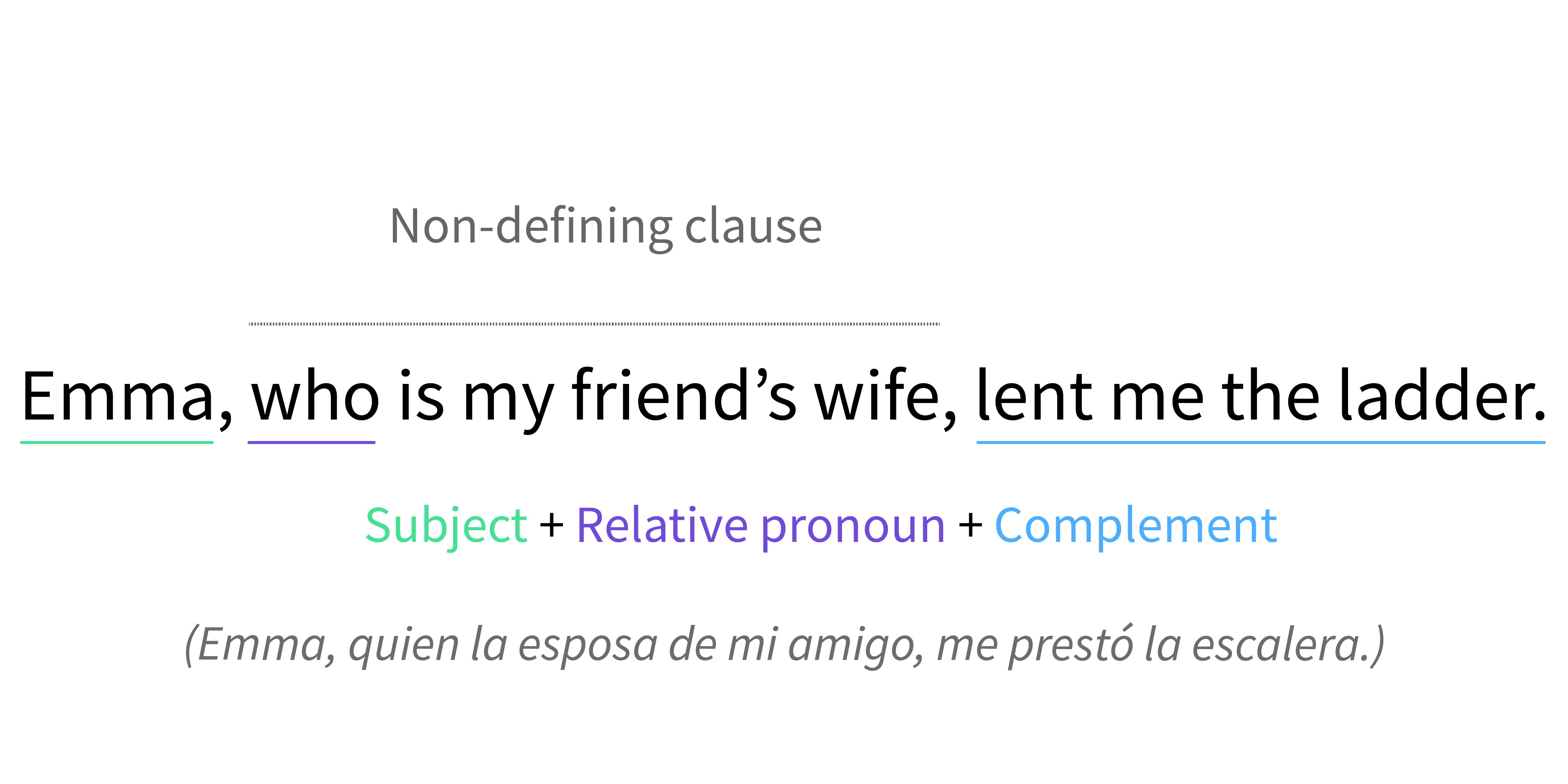
Defining and non defining clauses
Defining clauses
A defining clause indicates the specific subject or object that is being mentioned or the person being talking about.
In this case, the sentence meaning changes when the relative clause is removed because this clause condenses the principal idea of the entire sentence. However, the sentence is still grammatically correct.
A defining relative clause can't be separated from the rest of the sentence. For example:
"The man who sold me the house has left the city."
Non-defining clauses
This type of relative clause, also known as a non-essential clauses, gives more information than the defining clause about the subject mentioned.
If a non-defining relative clause is removed from the sentence, some details may be removed but the meaning remains.
Commas or parentheses separate these sentences. For example:

In other words, there is no need of extra information to understand this type of sentence.
That is not used in this type of clause. Instead, you can use the following terms:
- Which: When an object is being referenced.
- Who: When a subject is being mentioned.
Remember, the clause always follows the subject.
Let's see an example that represents all that we've learned on this page:
- Non-defining clauses with relative pronouns:
"The theater, which is beautiful, was designed by Tom Jon." - Sentence without the non-defining clause:
"The theater was designed by Tom Jon."






